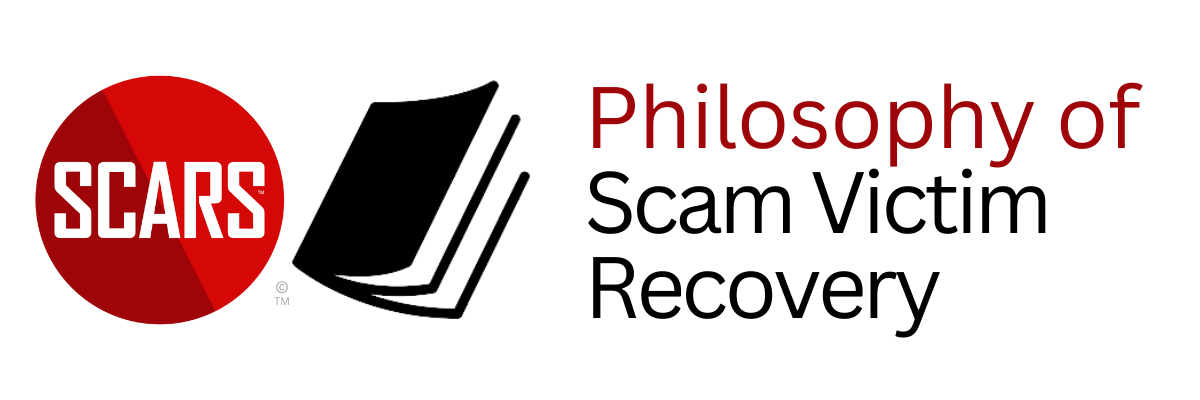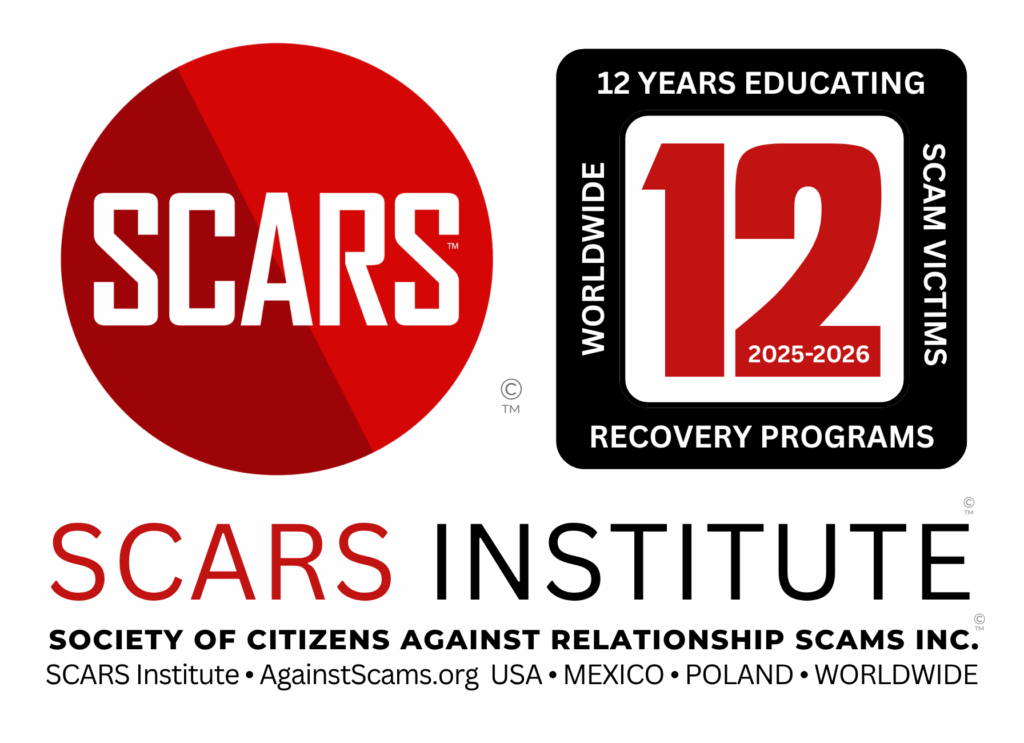Ho’oponopono is an Ancient Hawaiian Practice of Reconciliation and Forgiveness
Healing Through Ho’oponopono: A Path to Emotional Recovery for Scam Victims
Primary Category: Scam Victim Recovery Philosophy
Author:
• Tim McGuinness, Ph.D., DFin, MCPO, MAnth – Anthropologist, Scientist, Polymath, Director of the Society of Citizens Against Relationship Scams Inc.
About This Article
Ho’oponopono offers a quiet and deeply personal way to move forward when your recovery has stalled. After the crisis phase ends, you may find yourself emotionally stuck, stable, but not progressing. That plateau is where this practice belongs. You are not using it to forgive the scammer or deny the harm. You are using it to reclaim your ability to speak to the emotional pain without letting it dominate your life. The four phrases: I’m sorry. Please forgive me. Thank you. I love you, are not about guilt or blame. They are a way to face your internal conflict with compassion. You can use them in solitude, in support groups, or after therapy, always focused on your own healing. Ho’oponopono does not offer closure through justice or apology. It gives you the tools to end the emotional loop on your terms. It allows you to stop waiting and start living again. This is not erasure of the past. It is the recovery of your present, one quiet moment at a time.
Note: This article is intended for informational purposes and does not replace professional medical advice. If you are experiencing distress, please consult a qualified mental health professional.

Healing Through Ho’oponopono: A Path to Emotional Recovery for Scam Victims
Author’s Note: Ho’oponopono is not a tool for new scam victims. In the early stages of recovery, your focus is on survival, stabilization, and understanding what happened. Your energy is spent facing immediate fears, grief, and confusion. That work comes first. Ho’oponopono is for a later stage; when you have reached a plateau, when you feel stable but stuck, when the panic has faded but progress has stalled. If you are no longer in crisis but not yet moving forward, this practice can help you break through that stillness. It is a quiet, steady way to move from emotional pause to deeper healing.
What is Ho’oponopono
Ho’oponopono is a traditional Hawaiian practice of reconciliation and forgiveness. The word roughly translates to “to make right” or “to correct an error.” It is both a spiritual philosophy and a conflict-resolution process that centers on personal responsibility, repentance, forgiveness, and transmutation of negative energy.
The Core Idea of Ho’oponopono
Ho’oponopono is based on the belief that everything in your life, every relationship, conflict, or experience, is influenced by your inner world. If there is a problem, it is not out there. It begins with you. By healing your own inner memories and emotions, you clear the path for resolution and peace in the external world.
The Four Phrases
The modern version, popularized by Dr. Ihaleakala Hew Len and author Joe Vitale, involves silently repeating four phrases directed at yourself or others:
-
-
- I’m sorry
- Please forgive me
- Thank you
- I love you
-
These phrases are used as a kind of spiritual cleansing to release unconscious beliefs, emotional pain, and mental blockages. You are not necessarily addressing a specific person. You are working with the energy of the memory or feeling within you that is creating the disturbance.
However, there is an assumption in this that is less applicable. Because scam victims were not truly to blame for their scam, this does not apply as it would in a normal error in judgment. But, since all scam victims did make a mistake by say hello to the scammer, it can still be used in that context.
Purpose and Use of Ho’oponopono
You can use Ho’oponopono to:
-
-
- Let go of resentment or guilt
- Heal relationships
- Break patterns of self-sabotage
- Reduce anxiety or stress
- Cultivate emotional clarity
-
It is not a religious ritual, but it is deeply spiritual. You can practice it privately, without the involvement of others, and apply it to nearly any difficult situation, past or present.
Traditional Phases of Ho’oponopono: A Process of Collective Healing
In traditional Hawaiian culture, Ho’oponopono was practiced as a structured process to restore harmony within families. It was not a solo act. It was a shared commitment to resolve conflict, clear emotional pain, and repair damaged relationships. When something had gone wrong, when resentment, betrayal, or misunderstanding created emotional division, the family would come together under the guidance of a respected elder or spiritual leader to set things right.
The process unfolded in clear phases, each one designed to bring honesty, humility, and reconciliation into the space.
-
-
- It begins with a prayer to the creator god Kāne. This was not a performance. It was a humble request for help, a call to spiritual guidance that invited clarity and wisdom into the conversation. This step acknowledged that something sacred was taking place. In Hawaiian religion, Kāne is considered the creator god, associated with the sky, light, and procreation. He is one of the four major Hawaiian deities and is often depicted as the source of life and the builder of the world.
- Next comes the open naming of the problem. No one danced around it or avoided it. The issue that caused the disruption was clearly stated so that no one could hide behind silence or denial.
- This is followed by a full discussion. Each person shared their feelings. The tangled emotions, called hihia, were explored without judgment. Everyone was heard. That mattered.
- Then comes confession and forgiveness. Those who had caused harm took responsibility. They admitted what they had done. They expressed true remorse. Those who had been hurt were invited to forgive. Forgiveness was not forced, but it was encouraged as a path to release.
- The next phase is called kala, or release. The group collectively let go of the weight of past wrongs. No one held on to blame or punishment.
- After that, ʻoki symbolized the cutting off of the past. This was the moment when the group agreed to stop carrying the burden and to move forward together.
- Finally, there was pani, the ceremonial closing. A shared meal marked the return to peace. In some families, they ate limu kala, a seaweed that symbolized emotional release and reconciliation.
-
This traditional form of Ho’oponopono was not about punishment or control. It was about honesty, forgiveness, and the shared work of healing. Everyone had a role. Everyone participated. And when it was done with sincerity, balance was restored.
At its core, Ho’oponopono is about taking full responsibility for your life and your emotional state. It invites you to stop blaming, start clearing, and move forward with compassion. Whether or not you believe in the metaphysical elements, its framework offers a practical way to reduce emotional clutter and invite inner peace.
Introduction to Ho’oponopono for Scam Victims: The Emotional Ruins After a Scam
After a scam, your emotions do not settle easily. You may find yourself cycling through anger, shame, confusion, and despair. It is not just the money that was stolen. It is your sense of safety. It is your belief in people, in promises, in your own judgment. That kind of loss reaches deeper than a transaction. It touches your identity.
You may feel alone in this. You may believe that no one truly understands what it feels like to be tricked and left with nothing but questions, but this is not true. Recovery takes more than facts or legal steps. It takes emotional repair. And that begins by learning how to live with the weight of the experience without letting it define you. It also takes professional support.
One method that can help you begin that emotional repair is Ho’oponopono. As we have said, it is not therapy. It is not a financial plan. It is a quiet, deeply personal practice from Hawaiian tradition that focuses on healing your relationship with yourself through forgiveness, release, and self-responsibility. It allows you to speak to the pain without feeding it, and to let go of what continues to hurt you even after the scam has ended.
You do not need to believe in anything mystical to use it. You only need to be ready to take small, honest steps toward emotional clarity. Ho’oponopono does not erase the past. It helps you loosen the grip it has on your present. In that space, healing can begin.
Understanding Ho’oponopono: A Practice of Reconciliation
Ho’oponopono is a Hawaiian word that means “to make things right.” It is a practice of restoring balance within yourself. In traditional Hawaiian culture, it was used to resolve conflicts within families and communities. Today, it has evolved into a personal healing method that helps you deal with emotional pain, especially when that pain comes from betrayal, guilt, or unresolved anger.
This practice is based on the belief that everything you experience in life, even the painful parts, is connected to your internal state. If something is hurting you or repeating in your thoughts, it lives inside your memory, not just outside in the world. You can begin to change your experience by addressing that memory directly, not by fighting the past, but by releasing your emotional hold on it.
The modern version of Ho’oponopono uses four simple phrases. You speak them to yourself with intention. You are not reciting them to the scammer or trying to send them a message. You are speaking to the pain, the memory, and the emotional weight you carry.
- The first phrase is I’m sorry. This is not an admission of fault. It is a way to acknowledge that you are hurting. You recognize that something inside you needs care and attention. You give that part of yourself a voice.
- The second phrase is Please forgive me. You ask for forgiveness, not because you caused the scam, but because you have carried blame, fear, or silence for too long. You allow yourself to release that weight, even if you do not yet know how.
- The third phrase is Thank you. You thank yourself for surviving. You thank the moment for teaching you something, even if it came at a terrible cost. Gratitude begins to move you away from fixation and toward acceptance.
- The final phrase is I love you. You direct that love toward your own heart, your own mind, and the part of you that still feels damaged. This is not about the scammer. It is about reclaiming your emotional ground.
You do not need to say these words perfectly. You only need to mean them. When you speak them with honesty, you begin to make room for healing. You reconnect with the parts of yourself that the scam tried to separate from you. That is the beginning of restoration.
Why Scam Victims Struggle Emotionally
After a scam, the damage goes far beyond money. What you experience is not just financial loss; it is identity shock. Scammers target your trust, your beliefs, your hopes, and even your memories. You begin to question everything. You wonder how you missed the signs. You replay the conversations. You doubt your own judgment. That is not just confusion. That is trauma.
The emotional fallout can leave you feeling shattered. You may feel betrayed by someone you thought cared about you. You may feel humiliated for believing the story, for sharing your heart, or for sending money. You fear how others will see you. You fear how you now see yourself. The guilt does not go away just because the scam is over. It lingers. It loops. You carry it into every decision that follows.
You may start to live in emotional flashbacks. Every quiet moment becomes a mental courtroom. You replay your choices, imagining how it could have gone differently. You tell yourself that if you had said one thing or waited one more day, none of it would have happened. This is a survival response. It is your mind trying to make sense of something senseless. But the need to rewrite the past becomes a trap.
Part of what makes scam recovery so hard is the absence of justice. There is no apology. There is no closure from the person who harmed you. They vanish. They stay silent. You are left with all the weight and none of the answers. That void can grow inside you. You want to move on, but the story stays open. You keep waiting for something that never comes.
This is where Ho’oponopono can help. It gives you a way to close that emotional loop without needing the scammer to be part of it. You stop waiting for an apology you will never get. You begin speaking to the part of yourself that still needs peace. This practice does not erase what happened. It gives you the tools to stop carrying it. You release the pain, not to excuse it, but to heal from it. You take back control by creating your own ending to the story. That is how recovery begins.
Applying Ho’oponopono to Scam Recovery
Ho’oponopono can help you shift how you carry the pain of the scam. You are not using it to forgive the scammer or excuse what happened. You are using it to release the emotional burden that still lives inside you. This is your healing, not theirs.
Step 1: Direct the Practice Toward Yourself First
Start with self-compassion. You are not weak for feeling broken. You are not foolish for trusting. You are a human being who experienced betrayal. Say the four phrases, I’m sorry, please forgive me, thank you, I love you, to the part of yourself that is still hurting. Do this in a quiet moment, without pressure. You can speak the words aloud, write them in a journal, or simply repeat them in your mind. Let the words be soft but honest. You are not reciting them out of guilt. You are using them to calm the fear, soften the shame, and hold space for your own recovery.
Step 2: Address the Internalized Story of the Scam
The scam left you with more than financial loss. It created a story you may have started to believe. You may tell yourself you are stupid. You may say you cannot be trusted with money or judgment. These are lies born from trauma. Begin applying the four phrases to those thoughts. Speak to them directly. If you hear, “I was so stupid,” respond with, “I’m sorry. Please forgive me. Thank you. I love you.” This is not denial. It is correction. You are not your worst moment. You are more than what was done to you.
Step 3: Work With Emotional Triggers
When anxiety hits, when the memory resurfaces, or when you feel yourself pulling away from life, return to the practice. Use the four phrases as a calming ritual. Walk through them slowly. Say them like you are speaking to a wounded friend. Let each round wash away a little more of the tension. With each session, you rebuild trust in yourself. You learn that you can survive the emotion without being consumed by it. You create space where healing becomes possible, one honest phrase at a time.
What Ho’oponopono Is Not
You may hesitate to use Ho’oponopono because you think it means forgiving the scammer. That is not what this practice requires. You are not letting them off the hook. You are not saying what they did was acceptable. You are not pretending it didn’t matter. You are choosing to release your attachment to the pain so it no longer controls you. That is not about the scammer. That is about your freedom.
This is also not about forcing yourself to feel better before you are ready. Ho’oponopono is not spiritual bypassing. You are not layering positive words over unresolved trauma. You are not pretending the hurt is gone. You are speaking directly to the part of yourself that still hurts, and you are doing it with honesty and care. That is the opposite of denial.
This is not a shortcut. You do not say the four phrases once and expect everything to change. You are not avoiding hard feelings. You are walking through them with structure and intention. You are facing the damage with words that hold compassion instead of judgment. That takes strength, not avoidance.
It is important to understand that this is a repeated practice. Some days you may say the phrases and feel no shift. On other days, you may feel a wave of emotion or sudden clarity. That does not mean one day is right and another is wrong. You are not chasing a result. You are realigning yourself each time. You are creating emotional space to breathe again.
As we said above, you do not need to believe in magic or spirituality to benefit from this. You only need to believe in your right to heal. Ho’oponopono is not about pretending everything is fine. It is about accepting that you hurt and choosing to meet that pain with presence and respect. That is how you stop being defined by the scam. That is how you begin to feel whole again.
Realistic Benefits of the Practice
When you begin using Ho’oponopono, do not expect instant transformation. This is not a miracle cure. It is a quiet tool for emotional stability. It gives you structure when your inner world feels chaotic. You will not erase the scam or forget what happened, but you can begin to feel like yourself again. That is where the real benefit lies.
Emotional Regulation and Release
Scam trauma often leaves you in a state of constant tension. Your mind races. You replay moments. You feel waves of guilt, shame, or rage that seem to come out of nowhere. This emotional looping drains your energy and interrupts your focus. Ho’oponopono helps slow those loops. By repeating the four phrases, you shift your nervous system into a calmer state. You are not pretending the feelings are gone. You are giving them a place to be heard without being in control.
Over time, you may notice fewer obsessive thoughts. The guilt may soften. The constant pressure may begin to lift. You may still have hard days, but you respond to them with more clarity. Even if nothing changes around you, no justice, no apology, no return of what was lost, you begin to experience a sense of internal calm. That is what makes healing possible.
Personal Responsibility Without Self-Blame
One of the hardest parts of scam recovery is sorting out responsibility. You may say it was your fault. You may replay your decisions and feel ashamed. But blame is not the same as accountability. Ho’oponopono teaches you to take ownership of your healing, not the scammer’s actions. You are not responsible for what they did. You are responsible for how you move forward.
This practice helps you make that distinction. When you say I’m sorry or Please forgive me, you are not taking on the guilt of the crime. You are speaking to the part of yourself that still carries the weight of self-blame. You are choosing to care for that part, not punish it. You are choosing growth, not judgment.
Rebuilding Trust With Yourself
After a scam, your self-trust is usually the first thing to go. You begin to doubt your instincts, your decisions, even your intelligence. You feel exposed. You wonder how you missed the signs. That damage does not fix itself. You have to rebuild it on purpose.
Ho’oponopono helps you do that. Each time you return to the practice, you show up for yourself. You listen to your pain instead of ignoring it. You respond with calm words instead of criticism. That is how trust grows. Not by being perfect, but by being consistent.
As you practice, you may notice more emotional clarity. You begin to understand your feelings instead of drowning in them. Your thinking sharpens. Your decisions carry more confidence. You stop second-guessing everything. You move from reaction to response.
This shift will not happen overnight. You will still have doubts. You will still feel vulnerable. That is normal. But with each session, you strengthen your ability to sit with discomfort and guide yourself through it. You begin to feel steady. You begin to feel safe inside your own mind again. That is how you reclaim what was taken. Not by erasing the past, but by making peace with it on your own terms.
How to Start a Simple Ho’oponopono Practice
You do not need anything complicated to begin Ho’oponopono. You only need a willingness to sit with your emotions and treat them with care. This practice works best when it becomes part of your regular routine, not something you use just once and forget. You are not trying to fix yourself. You are trying to reconnect with parts of yourself that were hurt, silenced, or buried during and after the scam.
Create a Private, Quiet Environment
Choose a place where you will not be interrupted. It can be your bedroom, a quiet corner, or even your parked car. You do not need a spiritual setting. You need a space where you feel safe enough to let go of tension.
You can enhance the environment with soft music, warm lighting, or a calming scent. Journaling tools can help you stay grounded. Some people use meditation apps or calming soundtracks to support the rhythm of their breathing as they repeat the phrases. Choose what works for you.
If it helps, bring personal items into the space. You can place a letter, an email, or a printed message from the scam. These items do not need to provoke fear. You are not giving them power. You are reclaiming your ability to face the pain they hold. Use them only if they support your healing, not if they trigger panic.
Choose a Focus for Each Session
Before you begin, decide what you want to work with. You might focus on a memory that haunts you, a thought that repeats, or a feeling you cannot shake. You can also choose a belief that formed after the scam, like “I’m not safe” or “I can’t trust anyone.”
Once you have a focus, begin to repeat the four phrases, I’m sorry. Please forgive me. Thank you. I love you. You can say them aloud or silently. You can whisper or write them. Let the words move through you at your own pace. You do not need to rush or force a reaction. You may cry. You may feel numb. You may feel nothing at all. All of it is normal. Keep going.
Repeat the phrases until the emotional weight begins to soften, even if only slightly. You are not erasing anything. You are showing your nervous system that it can survive the feeling and stay present. That is healing.
Repeat and Adapt the Practice Regularly
The more you return to this practice, the more natural it becomes. You do not have to get it right. There is no right way. There is only your way. Some days you may want to practice for ten minutes. Other days, you may only have the strength for one quiet repetition. Both are valid.
You can use this as a daily check-in, a weekly reflection, or a tool when a strong emotion rises. Consistency matters more than perfection. Healing happens through repetition, not performance.
Keep it simple. Keep it sincere. Stay focused on your own experience. You are not doing this for anyone else. You are doing it to give yourself the calm and clarity you deserve. You are making room inside your life for safety, truth, and peace again. One session at a time.
Advanced Application: Ho’oponopono in Support Groups and Therapy
Once you become comfortable using Ho’oponopono on your own, you may start to see how it fits into other parts of your recovery. This practice can work alongside structured trauma programs, therapy sessions, and peer-based support groups. You do not have to choose between professional help and personal tools. You can use both to build a well-rounded approach to healing.
Many scam victims benefit from structured recovery programs. These programs offer guidance, education, and a community of people who understand what you are going through. Within that structure, Ho’oponopono can serve as a personal support tool. It does not replace your therapist or program leader. It gives you a way to process emotions that might not fit neatly into a worksheet or conversation. When you use it with intention, it helps you regulate your thoughts between sessions and stay grounded during difficult weeks.
You can also bring it into peer-based support groups. These groups can feel intense at times. You hear stories that sound like your own. You may feel triggered or overwhelmed. When that happens, Ho’oponopono gives you a way to respond internally. You can use the four phrases in your mind while someone is speaking, or during a break, or after the meeting. This does not interfere with the group. It helps you manage your own emotional rhythm.
If your group includes moments for personal reflection, you can introduce the practice without preaching it. Share what works for you, not what others should do. You can say something like, “I’ve been using a practice called Ho’oponopono to calm my thoughts after hard sessions. It helps me release guilt and reset.” Let others explore it if they choose. Do not pressure anyone. Some may connect with it right away. Others may not. Respect both responses.
You can also use Ho’oponopono after therapy sessions. Talking about trauma opens up old wounds. Even when therapy helps, it can leave you emotionally raw. Spend a few minutes after your session in quiet reflection. Say the four phrases to yourself as you sit with what came up. You are not trying to undo the session. You are helping your mind and body absorb it with care.
As you grow in this practice, you may notice your recovery gains stability. You move through challenges with a little more balance. You feel less reactive and more intentional. You respond to stress with calm words instead of panic. This does not mean your trauma disappears. It means you have tools to navigate it. You begin to trust that healing is possible, even when the emotions feel messy.
In a group or in private, Ho’oponopono helps you bring emotional balance into spaces that often feel heavy. You do not need to explain it to anyone. You only need to use it when your heart feels crowded and your thoughts need space. Let the practice support your healing without taking over your process. Keep it steady. Keep it honest. Let it be one more way you show up for yourself.
Closing the Loop: Healing Without Approval or Apology
You may still wait for something that will never come. You may hope the scammer will apologize. You may imagine them admitting what they did, expressing remorse, or making things right. That moment is not coming. Most scammers disappear. They vanish without facing the damage they caused. You are left holding everything they left behind.
You may also wait for the world to understand. You want someone to say, “You didn’t deserve this.” You want others to see how deeply you were hurt. That recognition may never arrive the way you need it to. Some people will not understand. Some will judge. Some will stay silent. That silence can feel like another betrayal.
Ho’oponopono gives you another way forward. You do not need the scammer’s apology to close the emotional circuit. You do not need society’s approval to validate your pain. You can give yourself what others will not. You can complete the loop with your own words, your own honesty, and your own presence.
Each time you say I’m sorry or Please forgive me, you are not asking for the scammer’s return. You are releasing the hold their absence has on you. Each time you say Thank you or I love you, you are reclaiming your emotional power. You are deciding that your healing does not depend on justice, explanation, or resolution from anyone else.
This is how you break free. You let the emotional story end where you choose, not where the scammer left it. You stop waiting for closure, and you create it. That is not surrender. That is strength. You move forward with dignity, on your terms, with your voice leading the way.
Conclusion: A Quiet Way Back to Yourself
Recovery after a scam is not only about money. The financial loss matters, but it is only part of the wound. What truly breaks is something deeper, your sense of safety, your trust in others, your belief in yourself. Healing that kind of damage takes more than logic or paperwork. It takes emotional work. It takes a spiritual shift. It takes a quiet willingness to come back to yourself with honesty and care.
You are not weak because this experience hurt you. You are not foolish for needing time to heal. What happened to you was not just a mistake. It was a violation. It left you with questions, self-doubt, and emotional scars that do not fade quickly. But you are allowed to recover. You are allowed to find peace without waiting for permission or approval from anyone else.
Ho’oponopono does not ask you to forget. It does not ask you to pretend it never happened. It does not try to erase the past. Instead, it helps you release its grip on your present. You learn to sit with the pain without letting it run your life. You respond to your inner wounds with clarity, not panic. You begin to feel like you belong in your own mind again.
This practice gives you structure when the emotional chaos feels too loud. It gives you words when nothing else makes sense. It brings calm into moments that feel out of control. You say the phrases not because they fix everything, but because they create space for truth to rise. That space is where recovery takes root.
You are not healing for the scammer. You are not healing to prove anything. You are healing to return to yourself. One phrase at a time. One quiet breath at a time. You are learning to live in a way that is honest, steady, and grounded in your own worth.
Let the past stay where it belongs. Let the pain loosen. Let peace grow in the space you now protect. This is not the end of your story. This is how you begin again, with your voice, your clarity, and your strength leading the way.
Please Rate This Article
Please Leave Us Your Comment Below
Also, tell us of any topics we might have missed.
-/ 30 /-
What do you think about this?
Please share your thoughts in a comment above!
ARTICLE RATING
TABLE OF CONTENTS
- Healing Through Ho’oponopono: A Path to Emotional Recovery for Scam Victims
- Healing Through Ho’oponopono: A Path to Emotional Recovery for Scam Victims
- What is Ho’oponopono
- Introduction to Ho’oponopono for Scam Victims: The Emotional Ruins After a Scam
- Understanding Ho’oponopono: A Practice of Reconciliation
- Why Scam Victims Struggle Emotionally
- Applying Ho’oponopono to Scam Recovery
- What Ho’oponopono Is Not
- Realistic Benefits of the Practice
- How to Start a Simple Ho’oponopono Practice
- Advanced Application: Ho’oponopono in Support Groups and Therapy
- Closing the Loop: Healing Without Approval or Apology
- Conclusion: A Quiet Way Back to Yourself
CATEGORIES
U.S. & Canada Suicide Lifeline 988
![NavyLogo@4x-81[1] Ho’oponopono is an Ancient Hawaiian Practice of Reconciliation and Forgiveness - 2025](https://scamsnow.com/wp-content/uploads/2025/04/NavyLogo@4x-811.png)
ARTICLE META
Important Information for New Scam Victims
- Please visit www.ScamVictimsSupport.org – a SCARS Website for New Scam Victims & Sextortion Victims.
- SCARS Institute now offers its free, safe, and private Scam Survivor’s Support Community at www.SCARScommunity.org – this is not on a social media platform, it is our own safe & secure platform created by the SCARS Institute especially for scam victims & survivors.
- SCARS Institute now offers a free recovery learning program at www.SCARSeducation.org.
- Please visit www.ScamPsychology.org – to more fully understand the psychological concepts involved in scams and scam victim recovery.
If you are looking for local trauma counselors, please visit counseling.AgainstScams.org
If you need to speak with someone now, you can dial 988 or find phone numbers for crisis hotlines all around the world here: www.opencounseling.com/suicide-hotlines
Statement About Victim Blaming
Some of our articles discuss various aspects of victims. This is both about better understanding victims (the science of victimology) and their behaviors and psychology. This helps us to educate victims/survivors about why these crimes happened and not to blame themselves, better develop recovery programs, and help victims avoid scams in the future. At times, this may sound like blaming the victim, but it does not blame scam victims; we are simply explaining the hows and whys of the experience victims have.
These articles, about the Psychology of Scams or Victim Psychology – meaning that all humans have psychological or cognitive characteristics in common that can either be exploited or work against us – help us all to understand the unique challenges victims face before, during, and after scams, fraud, or cybercrimes. These sometimes talk about some of the vulnerabilities the scammers exploit. Victims rarely have control of them or are even aware of them, until something like a scam happens, and then they can learn how their mind works and how to overcome these mechanisms.
Articles like these help victims and others understand these processes and how to help prevent them from being exploited again or to help them recover more easily by understanding their post-scam behaviors. Learn more about the Psychology of Scams at www.ScamPsychology.org
SCARS INSTITUTE RESOURCES:
If You Have Been Victimized By A Scam Or Cybercrime
♦ If you are a victim of scams, go to www.ScamVictimsSupport.org for real knowledge and help
♦ SCARS Institute now offers its free, safe, and private Scam Survivor’s Support Community at www.SCARScommunity.org – this is not on a social media platform, it is our own safe & secure platform created by the SCARS Institute especially for scam victims & survivors.
♦ Enroll in SCARS Scam Survivor’s School now at www.SCARSeducation.org
♦ To report criminals, visit https://reporting.AgainstScams.org – we will NEVER give your data to money recovery companies like some do!
♦ Follow us and find our podcasts, webinars, and helpful videos on YouTube: https://www.youtube.com/@RomancescamsNowcom
♦ Learn about the Psychology of Scams at www.ScamPsychology.org
♦ Dig deeper into the reality of scams, fraud, and cybercrime at www.ScamsNOW.com and www.RomanceScamsNOW.com
♦ Scam Survivor’s Stories: www.ScamSurvivorStories.org
♦ For Scam Victim Advocates visit www.ScamVictimsAdvocates.org
♦ See more scammer photos on www.ScammerPhotos.com
You can also find the SCARS Institute’s knowledge and information on Facebook, Instagram, X, LinkedIn, and TruthSocial
Psychology Disclaimer:
All articles about psychology and the human brain on this website are for information & education only
The information provided in this and other SCARS articles are intended for educational and self-help purposes only and should not be construed as a substitute for professional therapy or counseling.
Note about Mindfulness: Mindfulness practices have the potential to create psychological distress for some individuals. Please consult a mental health professional or experienced meditation instructor for guidance should you encounter difficulties.
While any self-help techniques outlined herein may be beneficial for scam victims seeking to recover from their experience and move towards recovery, it is important to consult with a qualified mental health professional before initiating any course of action. Each individual’s experience and needs are unique, and what works for one person may not be suitable for another.
Additionally, any approach may not be appropriate for individuals with certain pre-existing mental health conditions or trauma histories. It is advisable to seek guidance from a licensed therapist or counselor who can provide personalized support, guidance, and treatment tailored to your specific needs.
If you are experiencing significant distress or emotional difficulties related to a scam or other traumatic event, please consult your doctor or mental health provider for appropriate care and support.
Also read our SCARS Institute Statement about Professional Care for Scam Victims – click here
If you are in crisis, feeling desperate, or in despair, please call 988 or your local crisis hotline.
More ScamsNOW.com Articles
A Question of Trust
At the SCARS Institute, we invite you to do your own research on the topics we speak about and publish. Our team investigates the subject being discussed, especially when it comes to understanding the scam victims-survivors’ experience. You can do Google searches, but in many cases, you will have to wade through scientific papers and studies. However, remember that biases and perspectives matter and influence the outcome. Regardless, we encourage you to explore these topics as thoroughly as you can for your own awareness.























![scars-institute[1] Ho’oponopono is an Ancient Hawaiian Practice of Reconciliation and Forgiveness - 2025](https://scamsnow.com/wp-content/uploads/2025/04/scars-institute1.png)
![niprc1.png1_-150×1501-1[1] Ho’oponopono is an Ancient Hawaiian Practice of Reconciliation and Forgiveness - 2025](https://scamsnow.com/wp-content/uploads/2025/04/niprc1.png1_-150x1501-11.webp)
